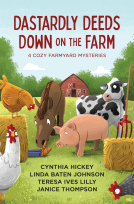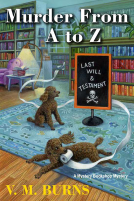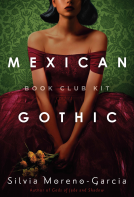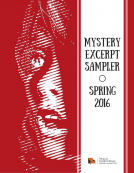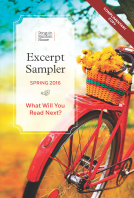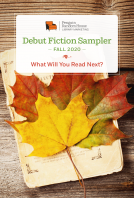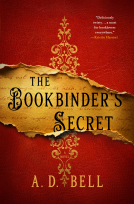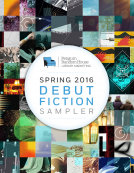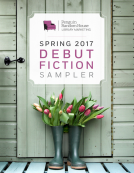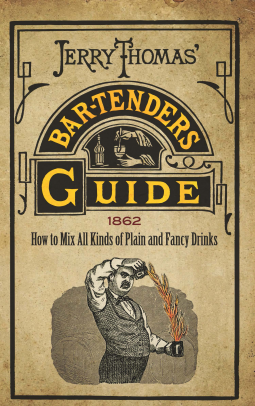
Jerry Thomas' Bartenders Guide
How to Mix All Kinds of Plain and Fancy Drinks
by Jerry Thomas
This title was previously available on NetGalley and is now archived.
Send NetGalley books directly to your Kindle or Kindle app
1
To read on a Kindle or Kindle app, please add kindle@netgalley.com as an approved email address to receive files in your Amazon account. Click here for step-by-step instructions.
2
Also find your Kindle email address within your Amazon account, and enter it here.
Pub Date Jul 20 2016 | Archive Date Aug 31 2016
Description
"A new beverage is the pride of the bartender, and its appreciation and adoption his crowning glory," declared Jerry Thomas (1830–85), the most famous bartender of his era. Known as "the father of American mixology," Thomas developed the showy techniques practiced at his saloons throughout California and New York. From hot whiskey toddies to wedding punch to "temperance drinks," this extensive compilation of timeless recipes will delight modern-day mixologists and their guests.
Available Editions
| EDITION | Paperback |
| ISBN | 9780486806211 |
| PRICE | $9.95 (USD) |
Average rating from 21 members
Featured Reviews
 Reviewer 312499
Reviewer 312499
According to the Bibliographical Note on the interior cover, this Dover edition is an unabridged republication of the 1887 printing of a work originally published in 1862. This is important to keep in mind while reading the book for two reasons. First, the typeface is antique and so the ink appears thicker on some letters than others, which can sometimes transform the act of reading into the art of deciphering. Lowercase h’s and lowercase n’s can look an awful lot alike in this typeface. Second, the recipe selection is reflective of the period in which the book was written. For example, there are no entries in the index for “martini” (it skips from “Martinez Cocktail” to “Medford Rum Punch”) yet there is almost a full double column page listing of punch recipes and five different shrub recipes. There are also an abundance of gin cocktails and whiskey cocktails, but no vodka cocktails (the V section of the index ends at “Victoria Punch”) or tequila cocktails (the index skips from “Temperance Drinks” to “Thirty-Second Regiment Punch”).
In a quaint historical quirk, the Index takes the place of a modern Table of Contents at the beginning of the book. And it is a quite comprehensive index – listing cocktails alphabetically by their name and by the key ingredient, which is usually in the name. I’m confident that if you were looking for a specific recipe, you could find it in this index because it is so well constructed. For example, “Philadelphia Fish House Punch” was listed in the index at least three times: once under F for “Fish House Punch, Philadelphia;” twice under P for “Philadelphia Fish House Punch” and for “Punch, Philadelphia Fish House.”
The six pages of Hints and Rules for Bartenders are very amusing. Rule number one is nothing short of awesome. It is something that modern bartenders sometimes forget: “An efficient bartender’s first aim should be to please his customers.” Of course, there is some charming elaboration on exactly how to please the customer. After that, there are hints and rules about the cleanliness of ice, the type of ice to put in a drink, the ornamentation of fancy drinks with seasonal fruit, heating glasses prior to serving a hot drink, dissolving sugar in hot and cold drinks, combining eggs and/or milk with hot wine or spirits, caring for and handling of certain types of bottles, casks and kegs to prevent breakage and spoilage, and other information useful to a turn of the nineteenth century bartender. Some of the information – especially the care and handling instructions for glass bottles – has become outdated by modern technology, but I was surprised by how much of it still rings true.
The Bartender’s Guide follows the Hints and Rules for Bartenders. This is about 110 pages of drink recipes, including sections for “Temperance Drinks,” “English Fancy Drinks,” “Syrups, Essences, Tinctures, Colorings, Etc.,” “Prepared Punch and Punch Essences,” and “Prepared Cocktails for Bottling.” Aside from the distinct sections, the recipes seem haphazardly organized – definitely not in alphabetical order – although recipes of the same type seem to be grouped together. Each recipe is clearly labeled with its name. Immediately below the name of the drink is the type of glass used to mix the drink - small bar glass, ordinary bar glass, large bar glass – or, in the case of punches, the number of people served by the recipe. The recipe ingredients themselves are measured in dashes, teaspoonfuls, tablespoonfuls, wine glasses and pony glasses for single drinks. For party drinks, like punches, the recipe ingredients are measured in gills, pints, quarts, and bottles. Because this is a book for bartenders, the recipes for liqueurs, syrups, and the like produce gallons of the stuff. For example, the Quince Liqueur recipe yields one and a half gallons. “Gum syrup” is a very popular ingredient in the single drink recipes. Fortunately, there is a recipe for it in the Syrup section of the book: it is nothing more than highly concentrated simple syrup. Raw eggs show up in the single drink and party drink recipes more times that I would have imagined – and not only in the six different recipes for Egg Nog. Some ingredients are very familiar, like Angostura bitters and Jameson’s Irish whiskey. Other ingredients are very uncommon nowadays, like Batavia arrack, orgeat syrup, isinglass, and calf’s foot jelly. The recipe steps are straightforward; they explain how much of what kind of ice to use, whether to shake or stir, whether to strain, what type of glass to serve in, and what type of garnish to serve with. Sometimes there is a bit of ephemera after the recipe explaining the origin of the name of the recipe or other related trivia. Occasionally, there is an illustration if a recipe requires a special preparation, like the Brandy Crusta or the Pousse L’Amour.
Because of the esoteric measuring units used in the single drink recipes, Google saved me from getting stuck when I wanted to try them. The Drinks Mixer website (http://www.drinksmixer.com/guide/1-4-1.php) had a helpful measurement chart that converted “dash,” “pony” and “wine glass” into fluid ounces. It would have been great if the publisher had included this chart in the book! According to this chart, a dash is 1/32 fluid ounce, a pony is 1 fluid ounce, and a wine glass is 4 fluid ounces. Since a teaspoon is 1/8 fluid ounce, a dash then converts to ¼ teaspoon. So the Manhattan Cocktail – one of my mom’s favorites – became possible after I acquired a small bottle of rye whiskey. The recipe in the book resulted in a very generous 5 ounce cocktail, which was unique but delicious. I used a homemade Orange 44 liqueur instead of the Curacao and Bitterman’s Burlesque Bitters instead of Boker’s Bitters because that was what I had on hand. And I definitely did not add the gum syrup – or anything else for that matter - as an extra sweetener.
Since I had acquired the small bottle of rye whiskey and had a lemon lurking in my fruit bowl, I also tried the whiskey sour recipe. I am no stranger to the whiskey sour, as I’ve used both my mother’s recipe and substituted whiskey in my sister’s amaretto sour recipe. Mom’s recipe uses equal parts frozen lemonade concentrate, water, and whiskey; and Jane’s recipe uses two parts Rose’s lime juice to three parts liquor. Therefore, strong taste of the rye and the tartness of the lemon juice in the book’s recipe was very different for me. The problem could have been that I read “1 large tea-spoonful of powdered white sugar” literally to mean a contemporary level teaspoon measurement of confectioners’ sugar, so my drink was not sweetened enough. Be it a matter of personal taste or a problem of execution, I could barely finish the drink. I’m half tempted to try the recipe again using a small spoon (as opposed to a soup spoon) from my silverware drawer to measure the confectioners’ sugar and see if that would be an improvement. Then again, while I do have half a lemon to use up, I do have other cocktails to try.
Since I had already put a dent in my vermouth bottle and had located my bottles of bitters, over the next two days I also tried the Vermouth Cocktail (4 ounces of vermouth with 2 dashes of Boker’s bitters) and the Fancy Vermouth Cocktail (4 ounces of vermouth with 2 dashes of Angostura bitters and 2 dashes of maraschino). I used the Bitterman’s Burlesque Bitters to replace the Boker’s Bitters in the Vermouth Cocktail, but I kept the Angostura Bitters in the Fancy Vermouth Cocktail. The gentlemen at the well stocked local liquor store were fascinated by my quest to recipe test an 1862 bar book but were at a loss as to what maraschino was; the best they could do was point me to a jar of Luxardo maraschino cherries and suggest that I use the liquid out of that. When I got home, I used the magic of Google to discover that maraschino is a bittersweet almond flavored liqueur made from Marasca cherries grown in northern Italy and Croatia. I went down a rabbit hole of other drinks containing maraschino and other uses for the liqueur (including making maraschino cherries) and decided that it might be worth investing in a bottle. So I had planned to venture out to check the shelves at the beverage superstore on the other side of town, but my schedule didn’t work out that way. The Fancy Vermouth Cocktail was very good with the liquid from the jar of Luxardo maraschino cherries.
Overall, the appeal of this book is more as a historical artifact than an actual modern bar reference. If it had a measurement conversion table and brief descriptions of some of the more exotic liqueurs and ingredients, it would definitely be more useful for modern mixology. As a 100% faithful reproduction, it is up to the reader to use the all knowing Internet to do his conversions and research. However, I read this book from cover to cover, and found it very interesting.
 Amary C, Reviewer
Amary C, Reviewer
I liked it. Basic information for many drinks. If you are not into frou-frou drinks, this is a good guide for you. We plan to try out a bunch for our Fourth of July party.
 roxi N, Reviewer
roxi N, Reviewer
As I study for my bartender's certificate, I found this book to go above and beyond the learning I've received. It is chock-full of information that I'm hoping sticks in my brain and the tips and tricks are amazing (even if it's common-sense type info). The cocktail recipes are brilliant and I can't wait to use myself as a guinea pig. I might even consider breaking down my hermit-like existence and begin entertaining just to use the recipes here!
First, I love the cover. It's artsy in that vintage coloring way I dig so much.
The book starts with to the point bartender hints and tricks. Some I knew, some I didn't. You'd think so much of this is common sense, but you would be surprised. As example of a tip I didn't know,
"As a general rule, shaved ice should be used when spirits form the principal ingredient of the drink, and no water employed. When eggs, milk, wine, vermouth, seltzer or other mineral waters are used in preparing a drink, it is better to use small lumps of ice, and these should always be removed from the glass before serving the customer."
.... Since I don't have shaved ice at home, it's doubtful I'll follow this, but good to know. Unless, of course, PARTY!! There are 27 tips total.
There are so many bartending recipes in this book, it's doubtful you'll need any other guide. Plenty of cocktails and mixes - tons I haven't heard of - and each recipe includes a note of what size glass is best used.
There aren't color pictures, but there are some drawings when it's needed, which fits into the vintage colored packaging.
136 pages of just recipes and some tips, I rate this highly. It's to the point, easy to follow, and stylish in its way.
I nabbed this one from Netgalley in exchange for an honest review.
 Anita R, Reviewer
Anita R, Reviewer
To say this book is anything but fantastic is just wrong. The ebook copy I received was a little difficult to read, but who cares! I read this book cover to cover, dying to try all these drinks. I am going to bring my kindle with me next time I get to a bar. A MUST have for any drink enthusiast! When I see it on the shelf, I am going to pick up a paper copy too!
"Care for a Morning Glory Cocktail, a Blue Blazer, or a Philadelphia Julep? Recipes for these and hundreds of other tasty libations appear in this landmark volume. Originally published in 1862, Jerry Thomas' Bartenders Guide is widely considered by drink historians as the first serious American book on cocktails and punches.
"A new beverage is the pride of the bartender, and its appreciation and adoption his crowning glory," declared Jerry Thomas (1830–85), the most famous bartender of his era. Known as "the father of American mixology," Thomas developed the showy techniques practiced at his saloons throughout California and New York. From hot whiskey toddies to wedding punch to "temperance drinks," this extensive compilation of timeless recipes will delight modern-day mixologists and their guests."
*I was given this e-book in exchange for an honest review.
 Reviewer 213507
Reviewer 213507
The title of this book got me excited as it sounds like an actual bartender has written this& is sharing his recipes for old & new cocktail recipes. My only problem, & the only reason I've given this book a 3-star rating is....my digital copy is in such fine, teeny tiny print, I have no idea if Jimmy Thomas is a famous world renowned bartender or if he's just a next door neighbor that's making up his own cocktails he enjoys drinking. I'm sure he's a legitimate bartender working at a very busy bar somewhere, but I'm unable to read any of his introduction to really know
The drinks themselves ( although also in such a fine print) I'm able to easily see some of the recipes & come to conclusion they're simple to make for the most part, as long as you have a fully stocked bar with most of the usuals a bar would contain. I know I saw some recipes for old fashioned drinks that we've all heard of, but might not know exactly how many parts of each liquor to use in order to make it. I also saw some recipes that looked very easy to make, sounded good, & would be nice to add at your next cocktail party. Add a few new ones to the old ones & people will start flocking to your home as opposed to the local bar, that may or may not know how to make some of the newer named drinks I saw
It is quite unfortunate my digital copy is of such poor quality that it makes me not really want to keep it on my iPad to try mixing some, since I'd most likely need bright lighting & a magnifying glass to read some of them. I also didn't really see an easy table of contents that would put the drinks in any sort of order to be looked up easily BUT just because I didn't see it in its super fine print, doesn't mean it doesn't exist. There may very well be a table of contents & an order to things. I just can't see it all that well.
It saddens me, as I don't really believe this book deserves the 3-stars, but in good conscience, since I can barely read it, I just can't give it more stars. I got my digital copy from net galley & Dover Publications in return this is my honest review, to which I'll add---I looked again, I see an index, alphabetically listing drinks. I think part of this book is a reprint from 1887!!!!! Again, this was all lost on me at first read but further looking found that information. It still is such fine print I cannot read the introduction as to who this bartender is/was which might make this even more exciting & interesting
Readers who liked this book also liked:
Cynthia Hickey; Linda Baten Johnson; Teresa Ives Lilly; Janice Thompson
Christian, Mystery & Thrillers, Novellas & Short Stories
Silvia Moreno-Garcia
Historical Fiction, Literary Fiction, Sci Fi & Fantasy
Penn Holderness; Kim Holderness
Health, Mind & Body, Parenting, Families, Relationships, Self-Help




